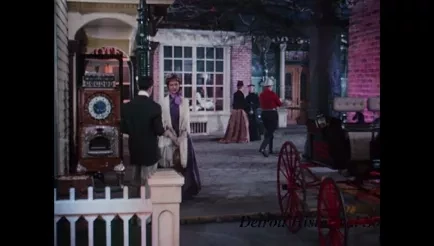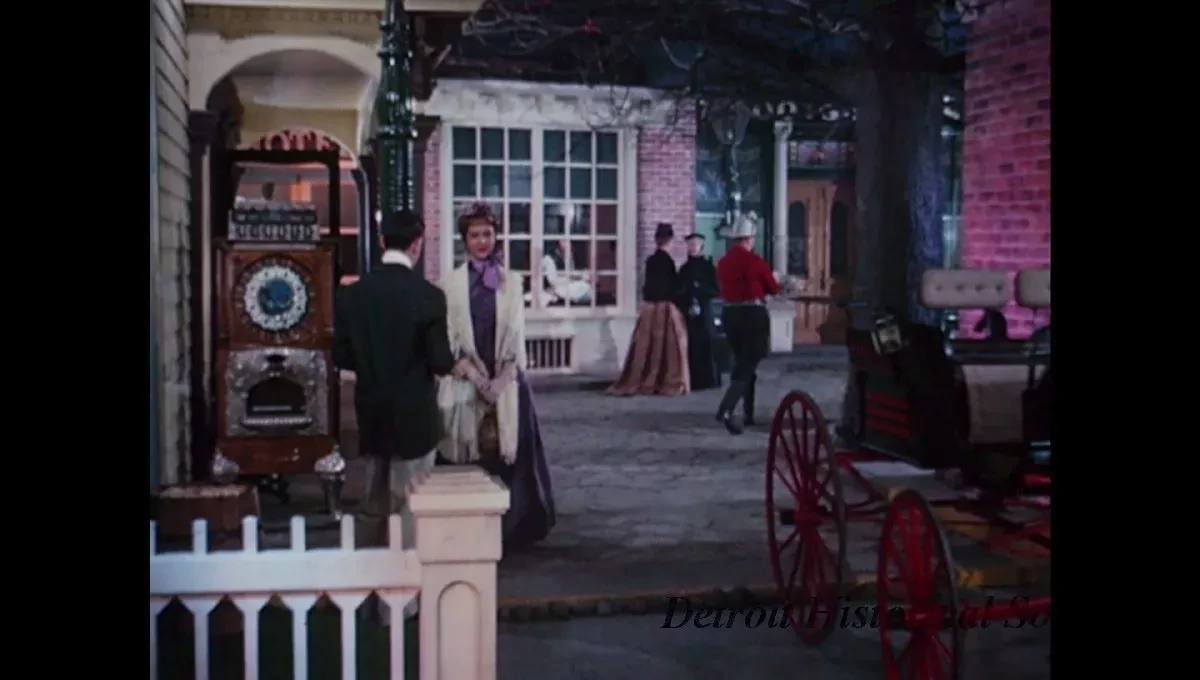Film, Motion Picture
Journey to Yesterday
Color 16mm reel containing the film "Journey to Yesterday," presented by the Detroit Historical Society Guild, and produced by Jam Handy, with the intention of reaching people unable to physically visit Fort Wayne, the Dossin Great Lakes Museum, and the Detroit Historical Museum. Using narration over shots of the three locations and their artifacts, the film takes the viewer on a tour of what it terms the museum's "three physical units." Music boxes from the Abbe-Pom collection of Arch and Ruth Rankin provide much of the film's soundtrack.
After a brief introduction, the first section of the film concerns Fort Wayne. Over a series of aerial shots of the fort's grounds, the narrator discusses the fort's earthworks, entrance tunnel, the barracks, and the unused ramparts.
The second section, about the Dossin Great Lakes Museum, also begins with aerial footage, before moving into a series of shots of the museum's interior and artifacts. The narrator discusses the museum's predecessor aboard the J.T. WING, the dugout canoe, and the museum's "world's largest collection of lake ship models."
The bulk of the film focuses on the Detroit Historical Museum. This again begins with an aerial shot. The film then makes special mention of the flags flown outside of the museum. After a brief introduction showing several exhibit areas including the Collector's Corner, and a firearm exhibit, the narrator explains the three subject divisions which the museum is organized around:
"Metropolitan Services... living in a big city," "Social History... Detroiters at home," and "Industrial History... Detroiters at work."
Over shots of tools and finished goods from the collection, the narrator quickly covers the evolution of industry, from hand made goods through machine tooled items, and finally into mass manufacture.
While the narrator discusses how the museum handles social history, people in historical costume, played by members of the guild and their families, are filmed around the museum. The segment begins with the French habitant house. Next, in the Hall of Patriotism, re-enactors are shown in the historic room recreation alcoves covering the colonial and Civil War eras. In the latter display, the narrator notes a desk used by James Moross, a table from the home of Benjamin F. H. Witherell, and an armchair used by James D. Liggett. Next, in the Room of Tradition, the narrator lists a series of notable families who are represented through its furnishings. The Streets of Old Detroit feature in the next set of shots. First the narrator spotlights the plank sidewalks, the clothing emporium, and the bank in the 1840s section. Then, in the 1870s section, the film focuses on the sidewalks and streets, the New Century Musical Puck musical bell machine from Harsens Island (1947.051.001), the horse troughs, the groceries and provisions store, and the fire engine.
The film then turns toward the subject of Metropolitan Services. The viewer is shown displays for the citizen, teacher, and policeman of the month in the Hall of Citizenship. An 1860s era classroom is recreated in the Hall of Metropolitan Services. The history of public transit is represented through models of streetcars and buses. The museum's model railroad layout is also featured here. Returning the Hall of Metropolitan Services on the second floor, the narrator discusses the special long-term "Detroit, How You Have Changed" exhibit installed here. Using maps and time lines, then shots of artifacts the city's growth is traced.
The final segment about special events is introduced by a series of shots of signs listing upcoming programming. The remaining shots all show the "Hanging of the Greens," the Guild's preparations of the annual Christmas open house, with decorations being placed throughout the museum.
A scroll at the end explains the roles of the Detroit Historical Society and the Detroit Historical Society Guild, and notes the music box-based soundtrack.
The film is on a grey metal reel.
Request Image

